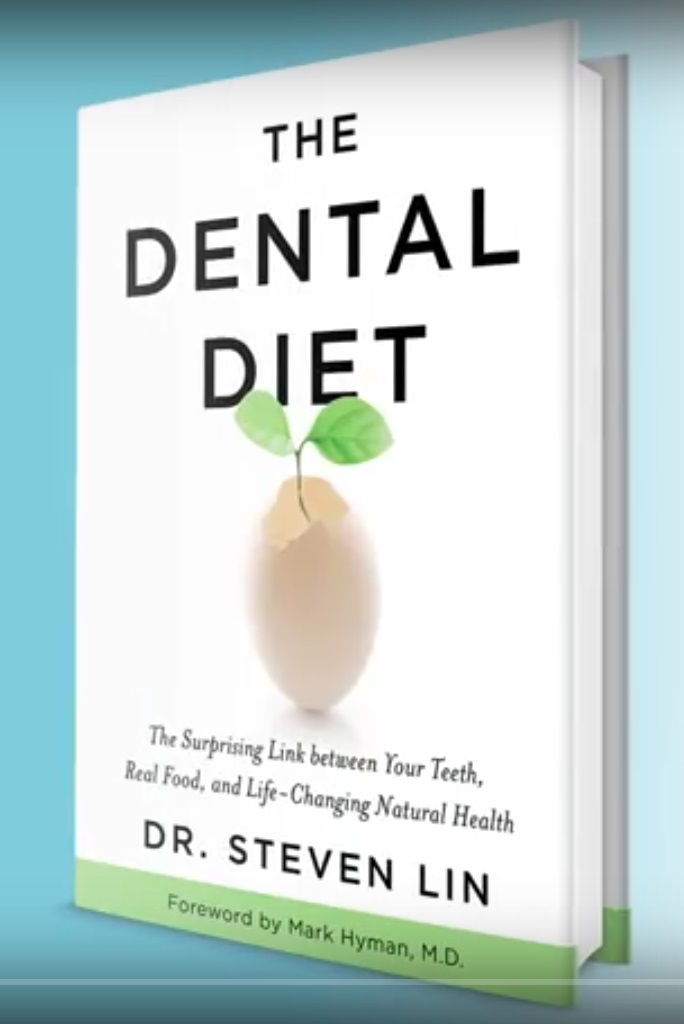We offer a variety of services including: Cleanings with fluoride treatment, Fillings, Sealants to prevent the grooves and pits in the teeth from trapping bacteria and creating cavities, Pulpotomies (baby root canals) for teeth with deep decay, Extractions, Stainless steel crowns, and space maintainers
Thursday, March 28, 2019
Throwback Toothday: The Tooth Chicken
Tuesday, March 26, 2019
Friday, March 22, 2019
Tuesday, March 19, 2019
Futudent innovates a novel way to capture high quality dental imaging with no interruptions
Monday, March 18, 2019
Throwback Toothday: Do the Modified Scrub
Facebook Live event: Got questions on dental benefits and third-party issues?
 Chances are you’ve run into concerns with patients’ dental benefit plans.
Chances are you’ve run into concerns with patients’ dental benefit plans.
Dental professionals can learn and get answers to some of the most common questions on dental benefits during a Facebook Live event scheduled for 1 p.m. Central time on March 22 at facebook.com/AmericanDentalAssociation.
The event will tackle issues such as the reasons for delayed or denied payments; how to eliminate wasting staff time waiting for dental plans to verify patient eligibility; and how contractual clauses can affect revenue for a dental office.
The event will highlight the ADA Third Party Payer Concierge, an exclusive member perk that connects dentists with ADA staff experts from the Center for Dental Benefits. The Facebook Live event features Dr. Chris Bulnes, ADA Council on Dental Benefit Programs chair, and Dr. Sara Stuefen, New Dentist Committee and ADA Council on Dental Benefit Programs member.
For those unable to join the event live, it will be recorded and available on the ADA’s Facebook page at facebook.com/AmericanDentalAssociation.
https://ift.tt/2Fjli7xSunday, March 17, 2019
2019 World Oral Health Day: Act on Mouth Health

On March 20, we join the world as we celebrate World Oral Health Day. Let us understand why keeping our oral health in check enables us to keep our whole body healthy.
https://ift.tt/2TKzUFOFriday, March 15, 2019
A Parent’s Guide to Fluoride
There are plenty of things to worry about as a parent, and your children’s teeth shouldn’t be one of them. As your children develop teeth, it’s important to start thinking about how to help care for them. In addition to brushing and flossing regularly, parents should make sure that children are using fluoride to prevent tooth decay.
What is fluoride?Fluoride is a mineral found in natural water sources. It is the ionic form of the trace element fluorine, commonly found in the environment, leaching from soil and rocks into groundwater.
Why is fluoride important for dental health?When delivered systemically and used topically, fluoride is a safe and effective agent that can be used to prevent tooth decay and dental cavities. Topical fluoride strengthens teeth already in your mouth, while systemic fluorides are ingested and become incorporated into forming teeth. This is why fluoride protection is important for kids of all ages.
In most communities, fluoride is added to the water. According to the ADA, an optimal level of fluoride in community water is safe and effective in preventing tooth decay by at least 25 percent in both children and adults.
For topical uses, fluoride is also added to toothpastes and mouthwashes. Parents can purchase flavored, fluoridated toothpastes for children to enjoy brushing more.
If your community does not have fluoride in the water or your children drink strictly bottled water, they could be at a high risk of tooth decay. To prevent this, fluoride supplements can be prescribed for children ages 6 months to 16 years.
If you have more questions about fluoride and your children’s dental health, ask your local Charlotte pediatric dentist!
https://ift.tt/2TOtk0pGetting to know you: Dr. Emily Mattingly
 What kind of dentistry/specialty do you practice?
What kind of dentistry/specialty do you practice?
I am a general dentist in a group family practice. I see mainly pediatric and adolescent patients in an area where we have a high volume of Medicaid patients.
Where do you practice?
I practice in rural north central Missouri in my hometown of Chillicothe, the “Home of Sliced Bread.”
Why dentistry?
I am a fourth-generation dentist; however, originally I wanted to attend medical school. I started working as a dental assistant for my father and came to the realization that I actually loved improving patient’s smiles and furthering my knowledge about
oral health.
Why are you an ADA member?
I am an ADA member for many reasons, but the one I feel most strongly about is advocacy for our profession and oral health.
What was your first job?
My first job was filing paper charts and calling to confirm appointments in my father and grandfather’s dental office.
What has been the best time of your career so far?
The best part of my career has been when my husband and I bought into our practice and moved from being associate dentists to owner dentists.
When I’m not practicing, I’m:
Usually spending time with my husband and our three small children: Elliot, 5, Elyse, 3, and Adah Pearl, 2 months. I also love listening to audiobooks!
One fun fact about me:
I am a Lifetime Member of Girl Scouts and received my Silver and Gold Awards during my active years. Fewer than 6 percent of Girl Scouts achieve their Gold Award and it is the equivalent of the Boy Scout’s Eagle Scout.
https://ift.tt/2OayxukThursday, March 14, 2019
2019 Dental Quality Alliance Conference registration now open
 The Dental Quality Alliance invites you to their 2019 Conference: Pathway to Improvement, May 17-18 at the ADA Headquarters in Chicago.
The Dental Quality Alliance invites you to their 2019 Conference: Pathway to Improvement, May 17-18 at the ADA Headquarters in Chicago.
This conference, which offers attendees 10 CE credits, is designed to strengthen in-depth understanding of the quality measurement infrastructure within dentistry by canvassing on concrete opportunities for system-wide improvement.
For registration, conference highlights and more information, visit the 2019 DQA Conference Page.
https://ift.tt/2u8R7cRWednesday, March 13, 2019
GLO Science is a Trendy New Teeth Whitening Service
Newly tested technology provides Archer Dental’s teeth whitening service teams in all three locations across Toronto with yet another tool!
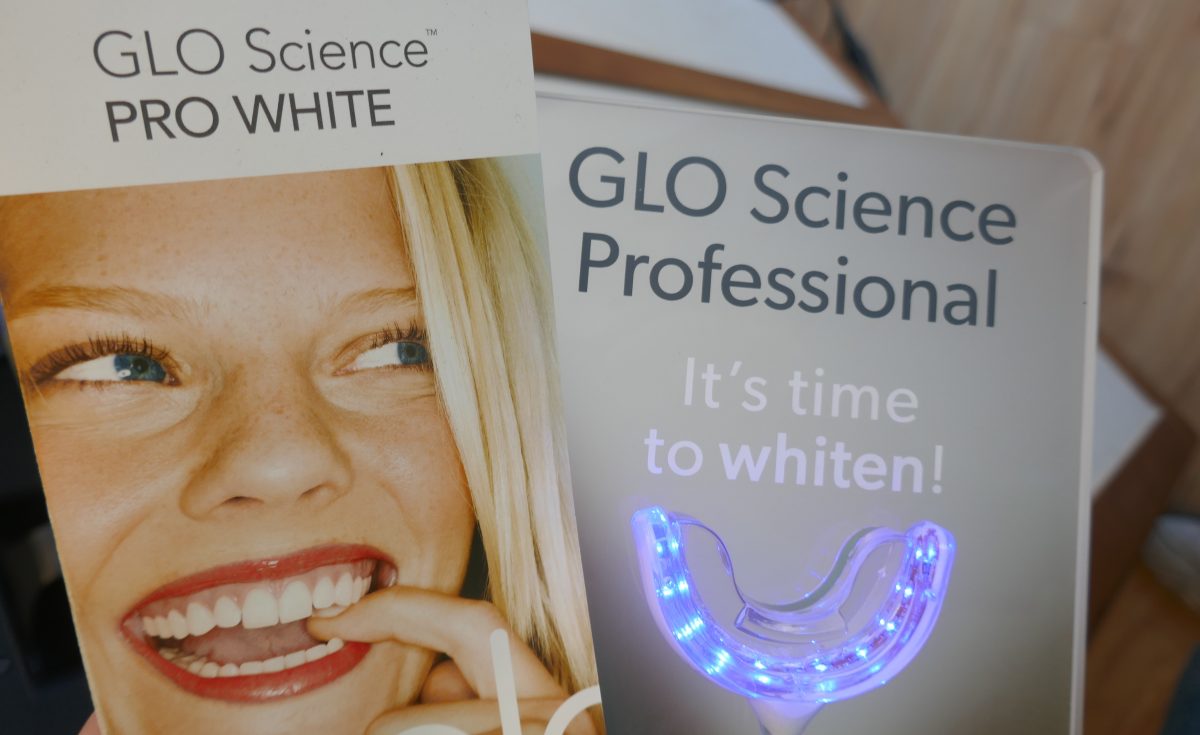
Say hello to GLO. GLO Science PRO WHITE is an in-office teeth whitening treatment that combines GLO warming heat and light with professional strength whitening gel (that can only be applied by a dental professional). The patented GLO Brilliant device is the only teeth whitening system in Canada today to combine LED lights with warming GLO heat to accelerate safe hydrogen peroxide whitening formulation. Used in thousands of professional dental offices worldwide, the technology is clinically proven to whiten smiles with no sensitivity.
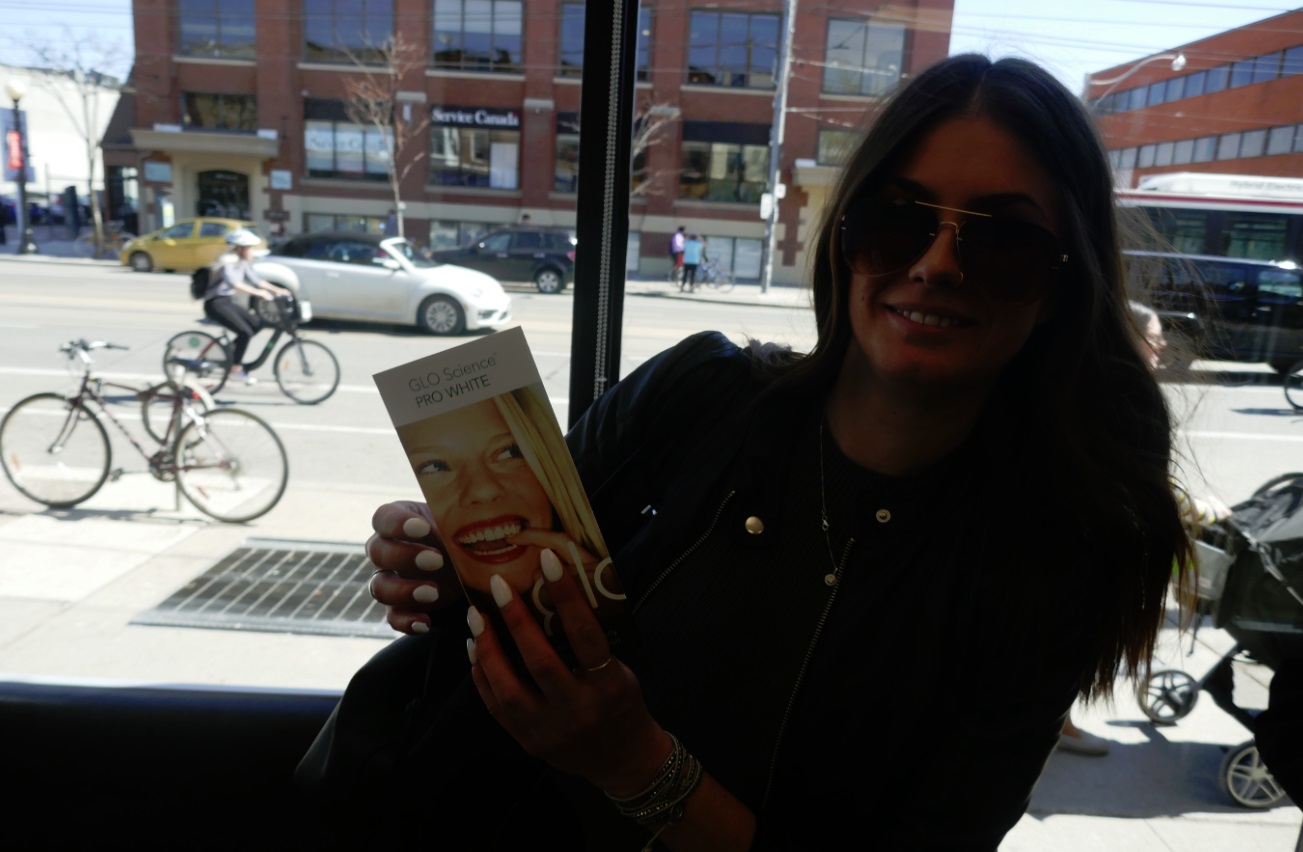
Suitable candidates are approved in advance for the treatment at Archer Dental. Upon arrival, the patient will first apply GLO lip treatment. After this protective barrier is in place, patients are invited to bite down the blue LED light mouthpiece (upon which our trained professionals have already spread the trademark GLO whitening gel.)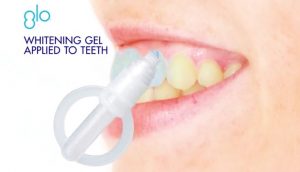
The patient bites down just enough to make contact, and to allow the LED lights inside to warm and glow the photo-activated peroxide paste. Unlike other hand-held whitening devices on the market, the GLO system is proven to be effective, safe, and easy to handle.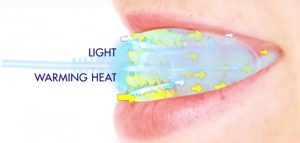
GLO chair side service at Archer Dental is a fast professional treatment that creates a whiter smile in under an hour, without pain.
How does it work?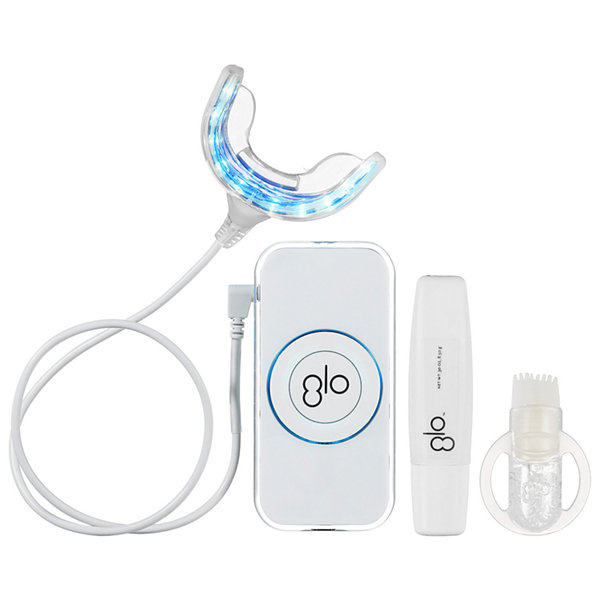
G.L.O. Science whitening system is designed for speed, efficiency and safety. Essentially, this breakthrough whitening system eliminates the messy trays and dentist operated light-guns. The patented Guided Light Optics (G.L.O.) device innovation combines warming heat-plus-light in a closed system mouthpiece to activate the professional strength GLO Professional Whitening Gel. Their technology uses both light and heat to optimize the effects of a specially concocted hydrogen peroxide toothpaste. Eight minute applications are set-up in the device to whiten the top and bottom teeth simultaneously.
Invented by oral health expert Dr. Jonathan B. Levine, GLO Science Professional is safe to use on crowns, caps, bonding and veneers. Below is a video that shows the system at work whitening teeth.
Whitening Gel in G-Vials?GLO whitening gel comes in small single-use GLO Vials (also called G-Vials) that can be easily squeezed and brushed directly onto teeth.
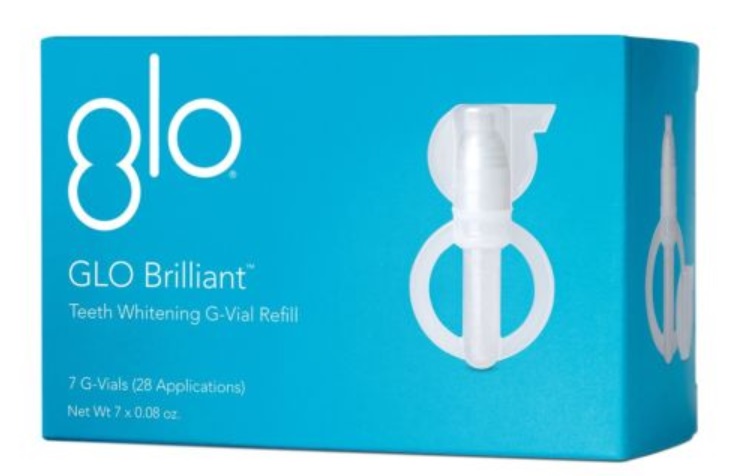
Hydrogen peroxide is powerful but perishable and needs to be kept in a sealed environment to maintain its potency. The G-Vial is a proprietary system that keeps the whitening gel fresh and active using hermetically sealed vials that prevent oxygen molecules from escaping. The G-Vial’s easy-to-apply brush tip applicator allows for easy targeting of the gel onto teeth, avoiding the lips and gums in order to prevent sensitivity.
The GLO light in the mouthpiece is a blue light (not UV light). The wavelength is similar to what has been used in professional tooth whitening for 10 years. Because the light is built into the mouthpiece and timed for 8 minute intervals only, the contact time is ideal for a session without sensitivity.
GLO uses LEDs (light emitting diodes) that emit blue light. Blue light has a wavelength of approximately 470 nm (nanometers) and is part of the “visible light spectrum”, which ranges from approximately 400 nm to 700 nm. It is completely harmless and has no negative effect on the human body.
Because having a dazzlingly white smile is important to our clientele, Archer Dental likes to keep current on the latest technological advances in this evolving field of study. Our staff has been keeping an eye on GLO Science and their trademark device since it debuted in Canada last fall and we are proud to announce today that this is available in our Little Italy dental office.
Call or visit Archer Dental Little Italy for more information.
The post GLO Science is a Trendy New Teeth Whitening Service appeared first on Archer Dental.
https://ift.tt/2Hvynw0How to Help Your Child Stop Sucking Their Thumb
For most children, thumb sucking is a natural instinct. Occasionally stemming as far back as their time in the womb, thumb sucking is the easiest way for young kids to self-soothe in times of stress or discomfort.
Unfortunately, the longer a child sucks their thumb, the more pronounced the damage to their teeth and mouth is likely to be over time. So how can you help your child avoid a future full of braces and other expensive (and often uncomfortable) oral appliances intended to correct the damage?
The best way to prevent permanent damage to the oral structures inside the mouth is to help your child wean themselves off of sucking their thumb. Here are a few tips to help you help your child keep their teeth straight, their jaws aligned, and their smiles bright!

Before you attempt to force your child to stop sucking their thumb, it’s important that you sit down with them and explain why they need to give it up. No matter how old (or young) a person is, they’re far more likely to work with you if you take the time to explain the problem to them rather than forcing their hand (pun intended.)
Let your child know that sucking their thumb can cause serious permanent damage to their teeth, jaws, and oral palate and work with them to come up with solutions together.

Depending on how young your child is, it might be tricky for them to understand the gravity of the situation and why it’s so vital they stop sucking their thumb sooner rather than later. This is where the internet (and specifically YouTube) comes in.
Rather than just trying to describe the problem in words they can understand, show them exactly what happens over time when they keep sucking their thumb. Empower them and educate them so they can be the ones to make the decision to quit (which in turn increases their likelihood of succeeding.)

Rather than scolding your child and making them feel ashamed of failure, reward your child when they do well. And you don’t have to give your child a physical reward in order to practice positive re-enforcement; the next time you see them reflexively put their thumb in their mouth, give them a chance to correct the behaviour on their own.
If they remember to remove their thumb, praise them and let them know you’re proud of them. Failure is to be expected from time to time and your child shouldn’t feel like they need to hide that from you.

Thumb sucking is often a self-soothing behaviour that children adopt in order to comfort themselves. Talk to your child and try to figure out the root cause of their discomfort. Often, by alleviating whatever is causing your child’s anxiety or insecurity, you remove the stimulus that triggers the thumb sucking behaviour in the first place.
Think of your child sucking their thumb as their own personal safety blanket; if you can figure out what’s stressing them out and alleviate that stress, you can cut the thumb sucking off right at the source.

If your child is still struggling to quit sucking their thumb, then there are an array of products available to help them. From bad tasting ‘nail polish’ (originally invented to help people stop biting their nails) to thumb guards, there are a number of different methods to choose from to assist your child with keeping their thumb out of their mouth.
Just be aware that there’s a very fine line to be drawn here and that your child should give their complete consent to trying the products out. Forcing your child not to suck their thumb against their will won’t end well for anyone. This is why the first step is so important. Talk to your child. Make sure you’re both on the same page and come up with a strategy together.
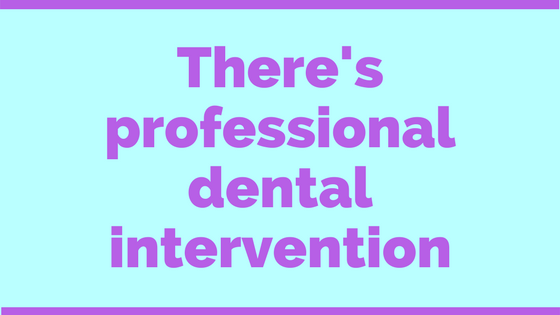
The best thing you can do to help a child who is struggling to stop sucking their thumb (or who has no interest in stopping) is to book an appointment with a dentist. At Archer Dental, our team is equipped to come up with the best possible treatment plan to suit your child’s unique needs.
We also offer Myobrace. Myobrace focuses on treating the underlying causes of crooked teeth and under or overdeveloped bites by gently re-aligning and correcting your child’s bite before permanent damage can be done. When used as prevention, Myobrace can eliminate the need for braces and improve your child’s quality of life as a whole. You can learn more about Myobrace and how it works right here.
The post How to Help Your Child Stop Sucking Their Thumb appeared first on Archer Dental.
https://ift.tt/2Hhg3aMNational Dental Hygiene Month
October is easily one of the busiest months of the year. In addition to high-profile events like Thanksgiving and Halloween, it’s also Breast Cancer Awareness month, National Disability Employment Awareness month and – most importantly for all of us at Archer Dental – National Dental Hygiene Month!
This October, we’re excited to celebrate National Dental Hygiene month by profiling some of our incredible dental hygienists.
Scroll down to learn more about Jasmine, Mary, Andria, Christina and Cristina and, as an added bonus, we’ve asked them to share some of their best oral hygiene tips to help keep your smile healthy and bright in between appointments!

How long have you been a Dental Hygienist:
12 years
Best piece of oral health advice for patients:
For those who are fans of natural/botanical remedies, chewing on cloves daily can help remedy bleeding gums. Make sure to still brush 2x daily, and floss nightly as well.
Mary McNulty
How long have you been a Dental Hygienist:
9 years
Favourite part of the job?
My favourite part about being a dental hygienist is that I am making a positive impact on the world one patient at a time. I feel I am given this special opportunity to make a difference in a patient’s life by focusing on their apprehensions and goals and creating a trusting relationship with them through, education, empathy, and genuine care.
Best piece of oral health advice for patients:
The best piece of advice that I can give patients in between their appointments is to FLOSS THE TEETH THEY WANT TO KEEP and if they fall off the Floss train, just get right back on…..
 Andria Frej
Andria Frej
How long have you been a Dental Hygienist:
13 years
Favourite part of the job?
The favourite part of my job is sharing my passion and knowledge with clients about dental hygiene care and having them leave with a smile on their face.
Best piece of oral health advice for patients:
The toothbrush does not remove 6 months of calculus 30 min before your appointment but brushing 2 times a day and flossing nightly Is the best way to keep you and your mouth healthy.
Christina Athanasakos
How long have you been a Dental Hygienist:
4 years
Favourite part of the job?
One of my favorite parts of being a hygienist is how much time I get to spend with my patients, one-on-one. I’ve heard many interesting stories, from what it’s like to travel to Iceland to what it’s like to live to age 97.
Being a dental hygienist gives me a chance to change lives for the better. I’m given an opportunity to treat people with empathy and caring in order to build a foundation of trust. As well as, prevent dental decay and providing them with education about how to care effectively for their teeth, gums, and the effects of diet on oral health.
I can help patients who have dental anxiety become more relaxed in the dental office, and my ultimate success is when I have a patient who can’t wait to come back!
Best piece of oral health advice for patients:
Brush 2X a day with a soft bristle toothbrush, brush your tongue, use fluoride toothpaste, floss everyday, mouthwash 2x a day and drink lots of water!
Cristina Sacilotto
How long have you been a Dental Hygienist:
9 years
Favourite part of the job?
Seeing patients’ oral health improve with our team’s advice and knowledge.
Best piece of oral health advice for patients:
It’s never too late to start taking care of your oral health!
The post National Dental Hygiene Month appeared first on Archer Dental.
https://ift.tt/2HvyiZeCREST Selects Dr. Natalie Archer as Spokesperson
Crest Canada, the toothpaste company, picked Toronto dentist Dr Natalie Archer to speak on their behalf in a Buchanon Group Medifacts infomercial promoting their Pro Health toothpaste.
In this Crest Canada sponsored Medifacts clip, Dr. Natalie Archer DDS plays herself, a real life dentist in Toronto, as she breaks down the benefits of incorporating Pro-Health toothpaste with stannous flouride into your oral healthcare routine. Stannous fluoride is a well known anti-bacterial agent that’s clinically proven to protect against gingivitis, plaque and tooth sensitivity, while still providing the trusted cavity protection you expect from Crest toothpaste. Stannous (from Latin stannum, ‘tin’) flouride is a chemical compound with the formula SnF2.
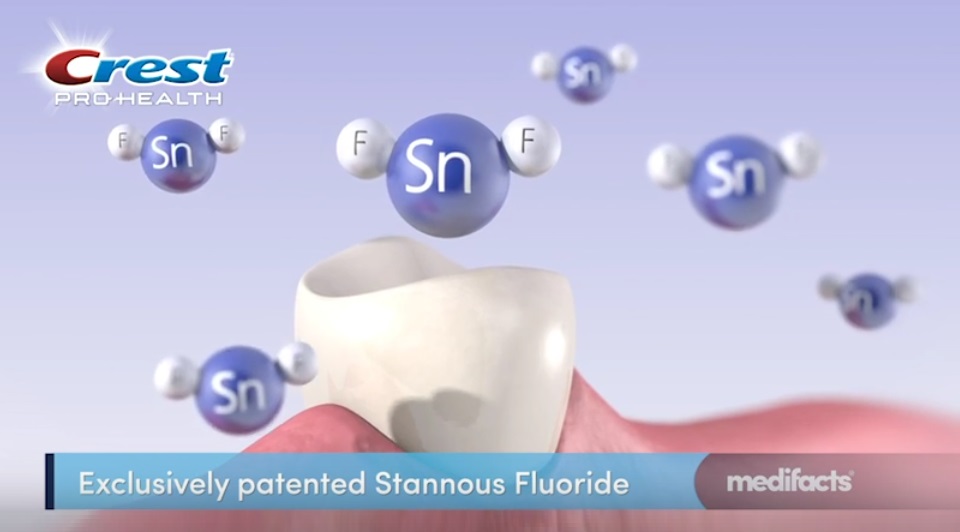
Buchanon Group, makers of ‘Brand Power’, ‘MediFacts’ and ‘InfoTalk’ are leading producers of infomercials in Canada and around the world. .
Buchanon’s 2014 Aspirin Medifacts Video Went ViralBuchanon’s Medifacts video series has been around for a decade or more now. Their most famous video was shot in late 2014 when the ASPIRIN 81mg brand from Bayer received approval from Health Canada to claim it may help save a life in the event of a heart attack. The approved claim was, “If you think you’re having a heart attack, call 9-1-1 and chew 2 ASPIRIN 81mg”. So they made a Medifacts video to tell the nation. And it worked.
In the following two years, consumer testimonials were received thanking the brand for sharing this message and for helping to save the life of loved ones. Consumers also relayed that when paramedics arrived on scene, they often asked if the patient had taken ASPIRIN.
The post CREST Selects Dr. Natalie Archer as Spokesperson appeared first on Archer Dental.
https://ift.tt/2Hi1Dr8Dr. Grant Yiu, Dentist in Downtown Toronto
Dr. Grant Yiu runs Archer Dental Little Italy in downtown Toronto. This capable dentist is the hero of 564 College Street, but sadly he shies away from cameras and doesn’t let people sing his praises too loudly. Because of his humility, not many people know about this proficient practitioner and how proud we are to have him as part of our team. One of the most remarkable things about Dr. Yiu is how this downtown dentist likes to spend his away-time improving himself and his surgical abilities. You might think a busy dentist would be eager to take a break, go fly fishing or sit on a sunny beach somewhere, but that’s not Dr. Yiu’s main priority. Whether he’s with a patient or in the middle of a conference call, Dr. Yiu is on a life-long quest to be the best dentist he can be.
Grant doesn’t think about it like that; he doesn’t have a superhero cape or costume. He genuinely wants to help all of the patients that walk through the doors of the clinic without having to turn anyone away. A good dentist sees and truly understands their patients’ pain and discomfort and knows just how it’s affecting their lives and their families. This is a dentist’s vocational burden and the reason why continued education and research is so important.
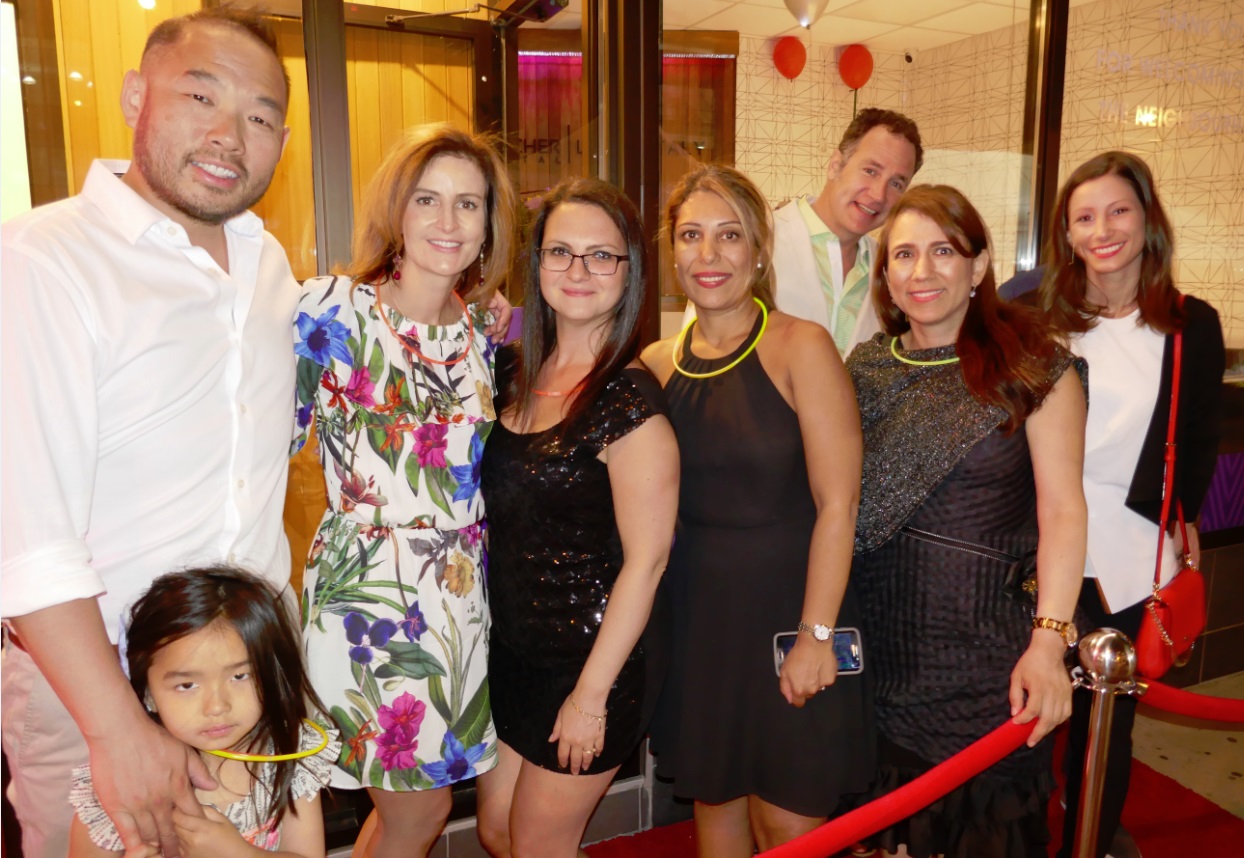
In the picture above, you can see Dr. Grant Yiu with Dr. Natalie Archer and the rest of the staff at Archer Dental Little Italy. This picture was snapped at the Archer Dental Little Italy launch party on 15th June 2018. Grant’s four year daughter, Mischa, can be seen here too, and although we’re not certain, it’s likely Grant’s wife Neda snapped this photo. Dr Yiu was willing to pose for her that night. The rest of us get side-profiles, or portraits-of-a-dentist like the one seen below where Grant is working on a patient.
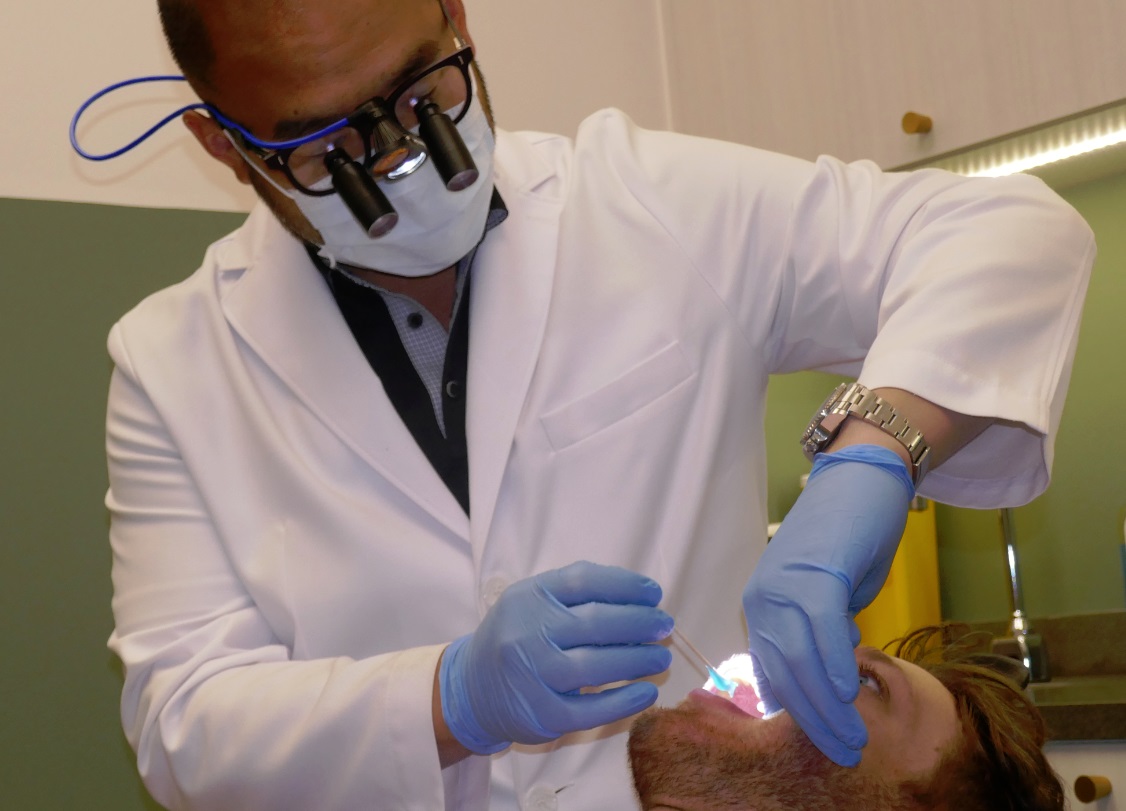
Dr. Grant Yiu was born in Calgary and spent his youth growing up next to the Rocky Mountains. Two decades ago, he made the decision to move to Toronto in order to become a Doctor of Dental Surgery at the University of Toronto.
Dr Grant Yiu is currently among the best dental surgeons in Toronto and we are proud to have him leading Archer Dental’s Restorative Dental Procedures, by which we mean bridges, veneers, crowns and dental implants (with a focus on implants). Since graduating, Dr Yiu has attended at least three famous dental schools in order to undergo additional training and has most recently finished courses through the Computerized Dentistry program at the University of Michigan. He also recently completed an Implantology mini-residency at the University of Toronto. While other dental offices might label it as cosmetic dentistry, we call it restorative dentistry because the work goes far beyond cosmetic procedures as the treatments always seek to address the root causes of a patient’s ailments. Unless completely unavoidable, no staff member at Archer Dental is interested in merely applying a band-aid fix to a problem.
Below is Grant’s next objective, the Digital Smile Design school. The concept of having and using software to design a perfect smile out of what nature provided is brand new, and revolutionary. The digital smile design course in which Dr. Yiu is enrolled is a practical diagnosis workshop that teaches him (and other clinicians) exactly how to use the software in order to visualize and measure dentogingival discrepancies in patients’ mouths.
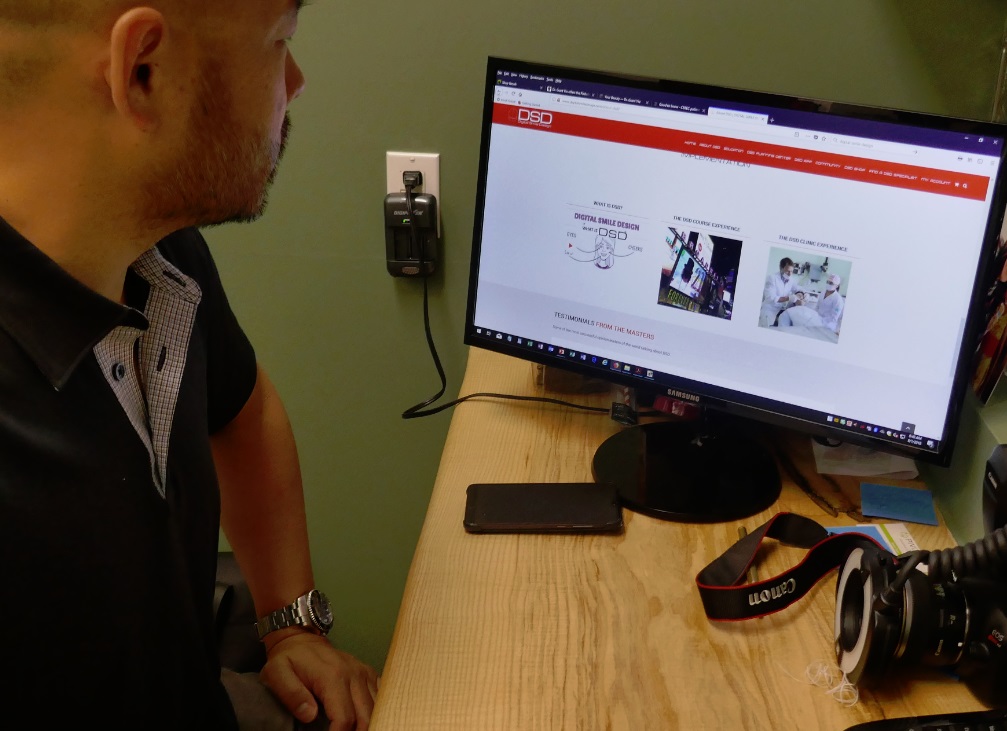
 Dr Grant Yiu is already a graduate of the world-renowned Kois Centre in Seattle, an evidence-based teaching center that offers the latest advances in esthetics, implants and restorative dentistry. That makes Dr Yiu a good choice for second-opinions and insights on what’s possible, and how to price difficult dental procedures.
Dr Grant Yiu is already a graduate of the world-renowned Kois Centre in Seattle, an evidence-based teaching center that offers the latest advances in esthetics, implants and restorative dentistry. That makes Dr Yiu a good choice for second-opinions and insights on what’s possible, and how to price difficult dental procedures.
Being a Kois trained dentist means Grant has studied and mastered this school’s trademark approach to Treatment Planning and Research-Based clinical decision-making in regards to treatable illnesses and oral health. Some of the specialties Grant focused on related to Occlusion (bite) and Jaw Joint (TMJ) Treatment. At the Kois facility, Grant studied and now specializes in Advanced Dental Implant Restoration. He learned and has since improved upon the current science and techniques pertaining to restorative dentistry (crowns, caps, fillings, and bridges). The Kois faculty also shares their insights into best practices and surgical techniques to create stable and healthy gums and bones.
Pinhole Surgery for Patients with Receding Gums in Toronto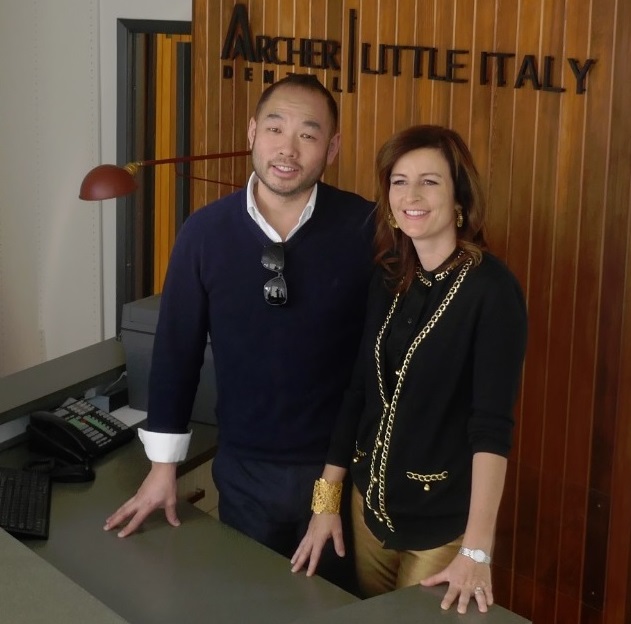 Archer Dental in Toronto is pleased to offer the revolutionary Pinhole Surgical Technique™ PST, a state-of-the-art alternative to traditional gum graft surgery. Patients who are tired of dealing with all the problems associated with gum recession can now get the receding gums treatment they need without worrying about compromising on comfort, safety or quality. The Pinhole Surgical Technique™ PST requires no cutting of the gum tissues, and can be completed within about an hour. It is truly the future of gum recession surgery for right patient. Using the Pinhole Surgical Technique™, a needle is used to make a small hole in the patient’s existing gum tissue. Through this pinhole, special instruments are used to gently loosen the gum tissue. … It simply involves the adjustment of the existing tissue.
Archer Dental in Toronto is pleased to offer the revolutionary Pinhole Surgical Technique™ PST, a state-of-the-art alternative to traditional gum graft surgery. Patients who are tired of dealing with all the problems associated with gum recession can now get the receding gums treatment they need without worrying about compromising on comfort, safety or quality. The Pinhole Surgical Technique™ PST requires no cutting of the gum tissues, and can be completed within about an hour. It is truly the future of gum recession surgery for right patient. Using the Pinhole Surgical Technique™, a needle is used to make a small hole in the patient’s existing gum tissue. Through this pinhole, special instruments are used to gently loosen the gum tissue. … It simply involves the adjustment of the existing tissue.
Dr Grant Yiu’s commitment to providing his patients with excellent care drives his desire to continually improve his own dental knowledge and skills. His job really is his passion and here’s here to help all of his patients achieve their dental health objectives, however difficult they may seem. If you live in Toronto and are seeking restorative dentistry, TMJ treatments or suffer from receding gums, please visit Grant at Archer Dental Little Italy today.
The post Dr. Grant Yiu, Dentist in Downtown Toronto appeared first on Archer Dental.
https://ift.tt/2Hvyfg0The Dental Diet by Dr. Steven Lin, a Dental Nutritionist
What if crooked teeth haven’t always been as commonplace as they are today? How about the theory that modern wisdom tooth extractions aren’t actually linked to evolution but rather to diet? And what if we thought about dental health as the foundation for our physical health as a whole? These are some of the ideas that Dr. Steven Lin puts forward in his ground-breaking book, The Dental Diet: The Surprising Link Between Your Teeth, Real Food and Life-Changing Natural Health.
 One of the major consequences of the shift from how our ancestors ate to how we currently eat is that many peoples’ jaws are no longer developing properly. Underdeveloped jaws can cause an array of health problems ranging from the obvious (crooked teeth/malocclusion and not enough room for wisdom teeth to erupt into the mouth properly) to the seemingly unrelated. Dr. Lin believes that most breathing and sleep disorders (like sleep apnea, for instance) are a direct result of an underdeveloped jaw. Those with an underdeveloped jaw don’t just lack room in their mouth for all of their teeth, they also don’t have enough space for their tongues to sit comfortably when at rest (which can result in the tongue blocking the airway when a person is sleeping.)
One of the major consequences of the shift from how our ancestors ate to how we currently eat is that many peoples’ jaws are no longer developing properly. Underdeveloped jaws can cause an array of health problems ranging from the obvious (crooked teeth/malocclusion and not enough room for wisdom teeth to erupt into the mouth properly) to the seemingly unrelated. Dr. Lin believes that most breathing and sleep disorders (like sleep apnea, for instance) are a direct result of an underdeveloped jaw. Those with an underdeveloped jaw don’t just lack room in their mouth for all of their teeth, they also don’t have enough space for their tongues to sit comfortably when at rest (which can result in the tongue blocking the airway when a person is sleeping.)
Whole foods are foods that can be eaten as-is or with very little preparation/alteration. Whole foods are not processed or refined and are free of the kinds of harmful additives typically found in processed foods.

Whole foods are vital for our digestive system’s microbiome because they maintain balance and feed the good bacteria living in our bodies. Whole foods also provide maximum nutritional value and often contain phytochemicals like antioxidants which boost the immune system and help repair cells that have been damaged by a diet high in processed foods and low in nutritional value. Many whole foods – things like blueberries, ginger, and garlic – also contain anti-inflammatory properties which can help your body heal from a number of conditions ranging from joint pain to IBD.
 In addition to eating locally sourced and organically grown fruits and vegetables, one of the best things you can do is eat meat and consume animal by-products from animals (like cows and chickens) that are free-range and have been fed grass rather than grain.
In addition to eating locally sourced and organically grown fruits and vegetables, one of the best things you can do is eat meat and consume animal by-products from animals (like cows and chickens) that are free-range and have been fed grass rather than grain.The post The Dental Diet by Dr. Steven Lin, a Dental Nutritionist appeared first on Archer Dental.
https://ift.tt/2HhCxs2Archer Dental Little Italy Launches During the 2018 Taste of Little Italy Street Festival
Last Friday night was a very special evening for everyone at Archer Dental as we officially launched our new location at 564 College Street. Archer Dental Little Italy was born in a blaze of Italian pizza, prosecco and Paparazzi photos! The dentists, dental hygienists, our dental office administrators (plus their families and friends) and several other notable guests all gathered on site to raise a glass to the future.
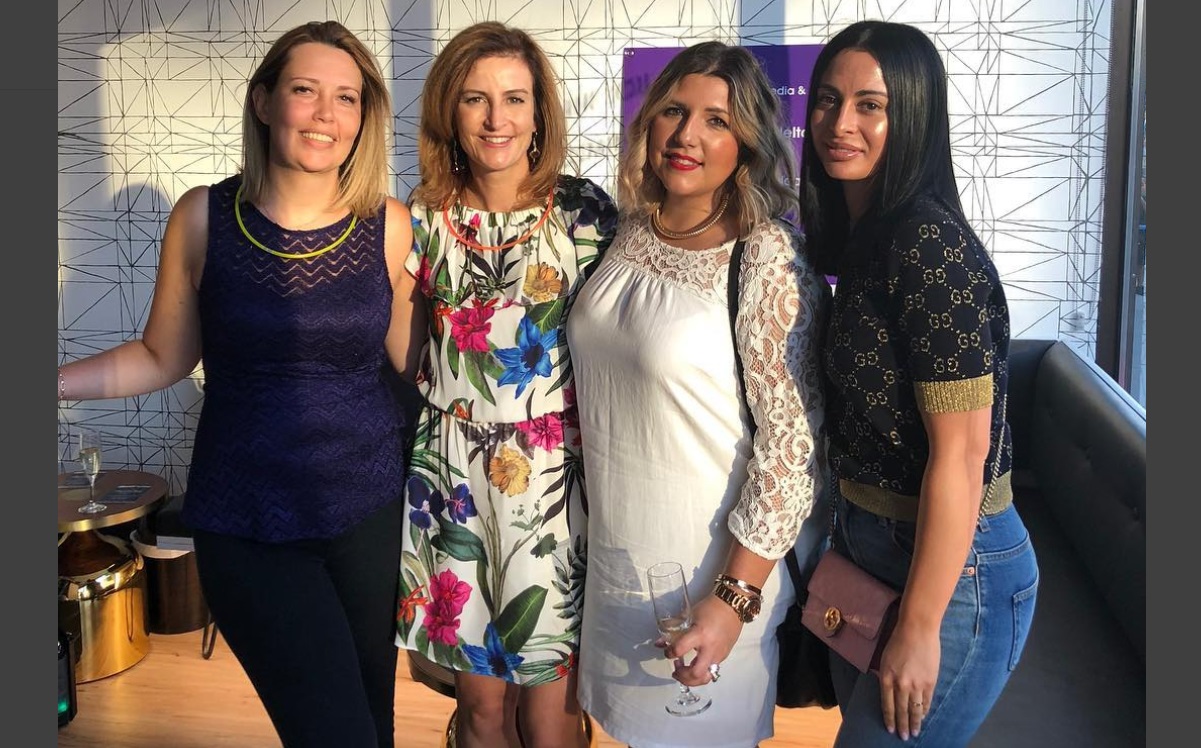
This was a VIP, invite-only affair. Outside the office was red carpet with silver stanchions and red velvet ropes. Nothing says exclusive event like ten feet of bright red carpet. Our formal Launch Party even had a burly bouncer checking RSVP invites at the door.

The red carpet attracted past and present Archer Dental patients from across the city. People who were not on the official RSVP list, but who could prove they were friends of Archer Dental were allowed to enter and join in the celebrations.
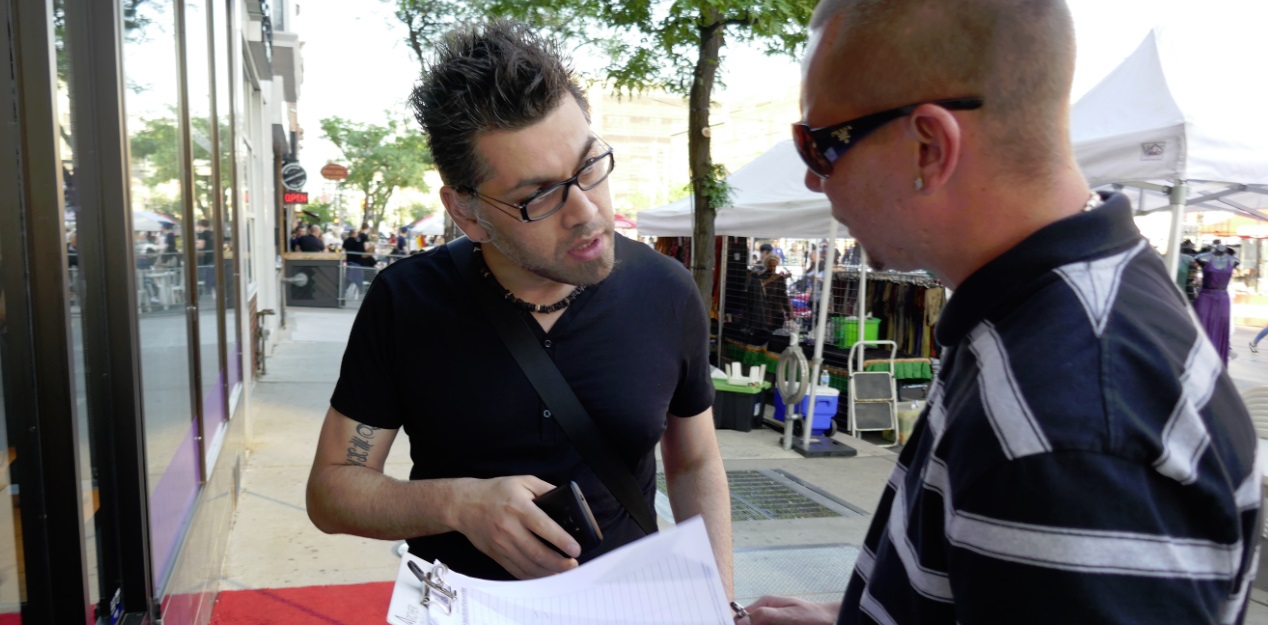
Early in the evening, we had a stream of media mavens, bloggers and lifelong patients. In the picture below, you can see that the Taste of Little Italy street festival is just getting underway outside as Christina Paruag of FemEvolve health and wellness magazine prepares to chat with Dr Natalie Archer.
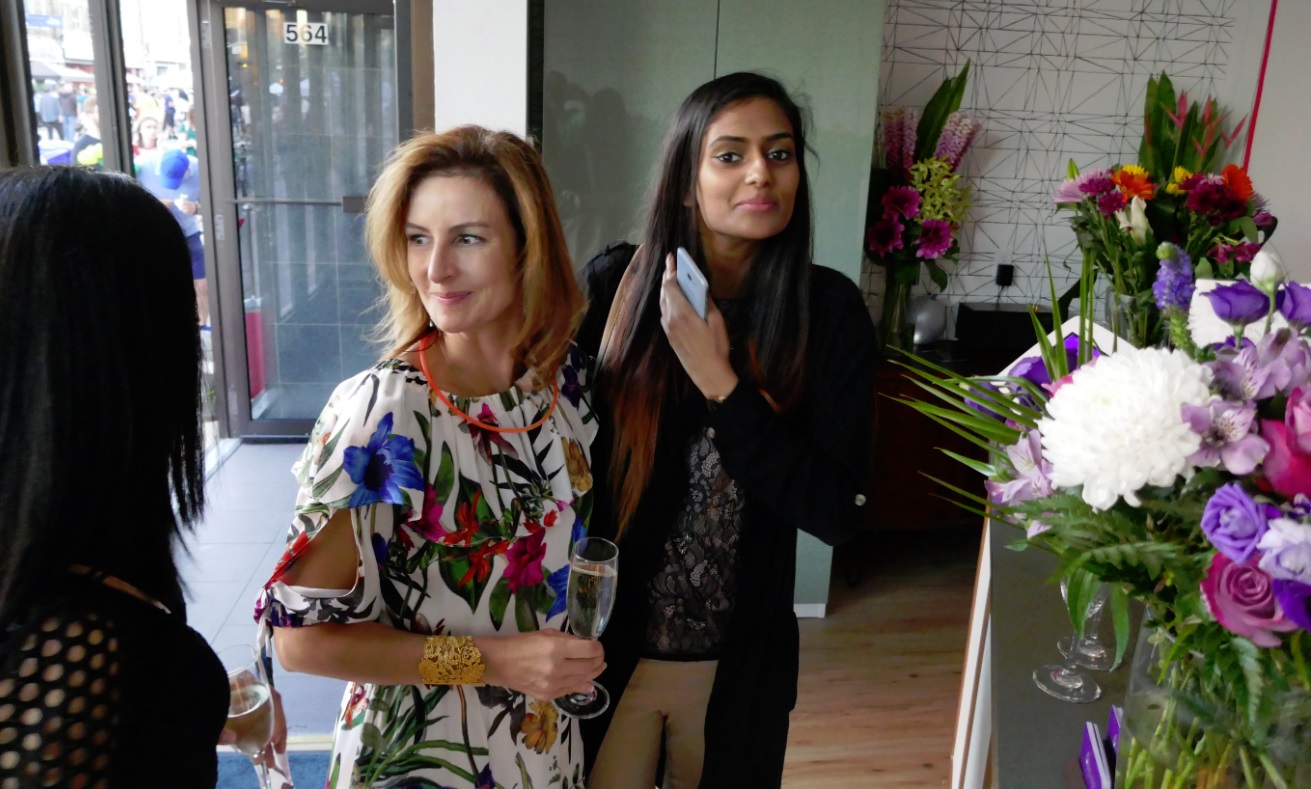
Amico’s Pizza catered the food, twice; they served Italian meatballs and their signature deluxe pizzas. The first load appeared at seven o’clock and was followed by another delivery at eight.

Below is Dr Grant Yiu with Dr Natalie Archer and some of the extended staff and service providers. Our youngest guest is also pictured here as Grant’s daughter, Mia, stayed up well past her bed time! Archer Dental Little Italy is a family friendly practice with a focus on kids; read about our Shoot the Tooth archery game booth held during the 2018 Taste of Little Italy street festival.

We love kids. Archer Dental Little Italy is located near two busy schools: Clinton Street Junior Public School at 460 Manning Ave teaches Kindergarten to Grade 6, and St Francis Assisi Catholic School is located at 80 Clinton Street and is also Kindergarten to Grade Eight. We hope families will find and use our newest location on College Street.
A Mariachi Exclamation Mark Ended the EveningAround nine pm, a fully costumed and properly equipped mariachi band showed up and serenaded guests with classics, “Cielito Lindo”, “Guantanamera”, “Mexico Lindo Y Querido” and “Cuando, Cuando, Cuando”; they were the real deal, and so it was a terrific surprise when guests learned that one of the troubadours is an Archer Dental staff member!

Everyone was dancing and enjoying the upbeat musical stylings of the mariachi band.

The mariachi entertained our guests for twenty minutes as the perfect end to an already incredible night.


Come visit us anytime at Archer Dental Little Italy, 564 College St, and keep your eyes open for our anniversary party during next year’s Taste of Little Italy festival.
The post Archer Dental Little Italy Launches During the 2018 Taste of Little Italy Street Festival appeared first on Archer Dental.
https://ift.tt/2Htw4tzWisdom Teeth Removal as a Right of Passage in Popular Culture
Throughout recorded time, and in many ways right up to this point in our human evolution, wisdom teeth removal was an uncomfortable experience for everyone involved. Almost all historical references to the operation dwell on the pain and discomfort of the surgery. The Egyptians pioneered it, and the Babylonians tried it too. Hammurabi’s Code, written in 1754 BC references tooth pulling as a form of punishment. The surprising appearance of new teeth was noted in texts by Plato and Hippocrates, and later, Europe’s medieval writers would link wisdom teeth to the ‘tooth worm’ which – it was then believed – erupted unseen in people’s mouths to create otherwise unexplained holes in teeth (especially favoring the last molars.) In monasteries throughout Europe, there were ascetic monks who suffered (and eventually died from) impacted wisdom teeth as a form of penitents. And although the 18th century was an Age of Enlightenment for the arts, literature, science and statecraft, common everyday dental care was still very much stuck in the Dark Ages.
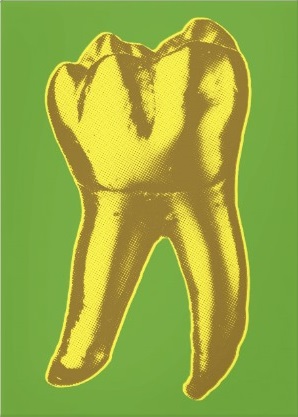
Gold Wisdom print designed by ElectricPopSpot and printed by Zazzleart.com
Luckily for us, all of that has changed with modernity; vocational training produces highly skilled dentists, and modern science equips them with effective medical equipment. The profession’s expertise and machinery just keeps getting better, and so does the pain mitigating pharmaceuticals available to patients. These three elements combined have changed people’s perception of the wisdom tooth removal process, and this is reflected in our mainstream media and popular culture in general.
Today, wisdom teeth removal is something of a grand event in young peoples’ lives; the experience has three distinct stages 1) anticipating , 2) enduring and 3) recovering afterwards (through a combination of resting and ingesting delicious soft foods.) This medical mark-of-maturation is now celebrated in many different ways. While there are references in popular music, films and TV shows, wisdom teeth removal videos are especially popular on YouTube; the once dreaded experience now presents young people with a legitimate (and completely legal) opportunity to record themselves in an altered state. The premise is usually the same – a patient recovering from wisdom tooth removal surgery solicits fame as they request a meeting with their favourite film and TV celebrity heroes – but each video still manages to be uniquely entertaining.
University & College Kids Get Wisdom Teeth Done in Summer BreakDuring their ‘Wisdom Tooth Summer’, many university and college students return to their parents’ house for what is likely to be their last summer at home. Its also quite common to see these same young scholars use the break to get their wisdom teeth removed. And so, together, the two events often become a rite of passage. The surgery is so commonplace in this age group that it’s estimated that well over 500,000 wisdom teeth are extracted across Canada during June, July and August of each year.
Wisdom Teeth Removal in Popular Music
The Ghosts That Haunt Me / Crash Test Dummies – 1991
The ubiquity of wisdom teeth extends all the way into the music industry. Just look at the lyrics in this Crash Test Dummies’ song where the narrator proclaims he’s one of the few people alive who have all their wisdom teeth (but still says things that aren’t so wise).
Comin’ Back Soon (The Bereft Man’s Song)
I’ve all my wisdom teeth
Two up top, two beneath
And yet I’ll recognize
My mouth says things that aren’t so wise
But when I sing my darling’s praise, I know I’m right, or close anyways.
In a number of recent television sitcoms, wisdom teeth removal surgery is used as a plot device to put a strong character at a medically induced disadvantage. In the show Broad City, in an episode titled Wisdom Teeth, the female lead, while on a double dose of Vicodin, asks a less than desirable male counterpart for a date (in a 23-minute voicemail that involves a Drew Barrymore impression).
A similar scenario unfolds in The Middle, with Malcolm recording his siblings while they’re both under the influence of a dentist’s painkillers.
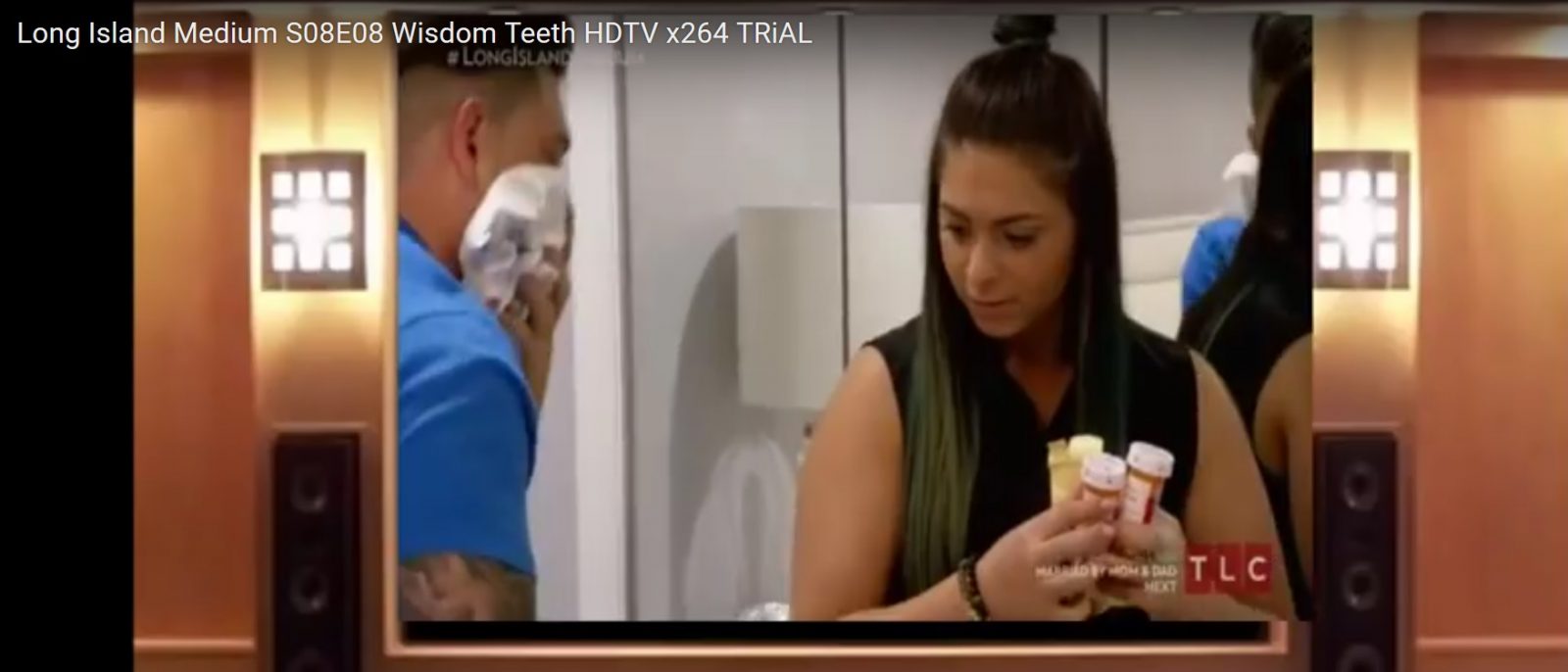
In Season Eight, Episode Eight of Long Island Medium, we get some good insights into how families with millennials are affected by the operation, and how they rally around their suffering siblings while secretly enjoying the family member’s temporary weakness. Once again, you can see the medicine in the female character’s hands as she helps her brother move about the house. The show celebrates love, family support, and all the silly things people say when under the influence of powerful pain killers.

On YouTube, video uploads of subjects ‘recovering from wisdom teeth removal surgery’ are so common that the phenomenon is considered to be its own content niche. Countless young people have recorded curious self-reflections from passenger seats in cars, presumably as they are being driven home from a hospital or dental clinic. Their awkward thoughts and sloppy speech are recorded while still under the influence of the drugs administered during the wisdom teeth removal surgery. The titles of these videos employ words like ‘recovering after surgery’ and ‘still under influence’.

A number of everyday Americans have used their wisdom teeth removal scenario to meet their celebrity idols; Ellen Degeneres flew one viral video subject to her television studio for an interview, and Ryan Reynolds sent another to an exclusive Deadpool screening after that young man’s Recovery Video accrued half a million views.
As pop culture has shown us, having your wisdom teeth removed isn’t nearly as terrifying as it sounds. Not only is it a rite of passage that marks the passage of time between childhood and adulthood, but it’s also an opportunity to relax and let yourself be silly. Who knows? Maybe your post-wisdom teeth removal video will be the next viral sensation.
The post Wisdom Teeth Removal as a Right of Passage in Popular Culture appeared first on Archer Dental.
https://ift.tt/2HgcdijMyobrace in Toronto at Archer Dental – Straighten Childrens’ Teeth Without Braces
Archer Dental now proudly offers Myobrace®, a no-braces approach to straightening children’s teeth and jaws.
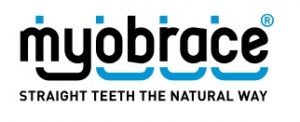 That’s right, no braces. Myobrace focuses on treating the underlying causes of children’s crooked teeth by gently re-aligning and correcting less than optimal bites and jaw alignments in their younger and slightly more malleable mouths.
That’s right, no braces. Myobrace focuses on treating the underlying causes of children’s crooked teeth by gently re-aligning and correcting less than optimal bites and jaw alignments in their younger and slightly more malleable mouths.
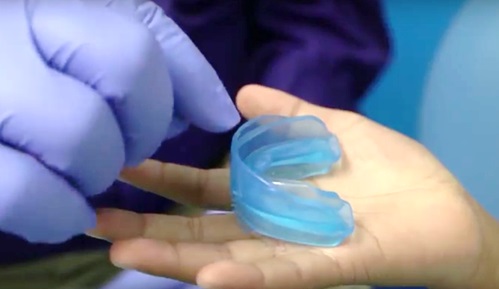
Child holds his custom fit Myobrace
The same principles can also be applied to correct bites in older people, but the device and practice is slightly different (next month, we’ll also be writing about Myosa).
Trusted by reputable dentists and orthodontists in almost fifty countries around the world, Myobrace has already successfully treated millions of children, and is now available at all three Archer Dental locations in Toronto, Canada.
Nature vs Nurture as it relates to Crooked TeethThere is a great debate raging in dental circles about what really causes crooked teeth. Is it genetics, as we always believed, that leaves people helpless to their body’s dental development? Or is having a misshapen mouth as a teenager the result of inferior breathing habits learned in early childhood? There are arguments on both sides but dentists at Archer Dental are now leaning toward the latter.
It’s common for parents and grandparents to look at their small children and recognize their own noses and eyes, and their own crooked teeth. At the same time, parents often scold toddlers for sucking their thumbs which they believe, and which many orthodontists have told them, is a leading cause of ‘buck teeth’ and misaligned mouths. So, which is the true culprit? Or is every case different and perhaps genes and behaviour are both factors?

Dr Chris Farrell at MRC, Australia
New thinking suggests crooked teeth are not so much inherited as they are trained, and that misshapen bites are the negative result of a child’s breathing patterns and poor myofunctional habits. This means that with a little work, it may be possible for small children to not inherit the crooked smiles of their parents and grandparents.
Myobrace originates from the work of Australian orthodontist Dr Chris Farrell who is also the CEO of Myofunctional Research Corp (MRC). MRC has been developing innovative intra-oral appliances to treat the causes of malocclusion and TMJ disorder since 1989. MRC develops educational resources to change people’s perceptions about oral health development and to provide both the public and professionals with informative teaching materials that highlight the importance of correcting bad myofunctional habits in children as early as possible. To this end, MRC’s mission statement is: “To Improve the facial and dental development of the growing child and allow treatment for orthodontic and TMJ disorders to be available to all populations with the use of modern and less complex techniques”.
Under Dr. Chris Farrell’s leadership, from 1989 to present day, MRC developed their dental trainers for treating malocclusion into a range of appliance systems suitable for growing children of all ages.
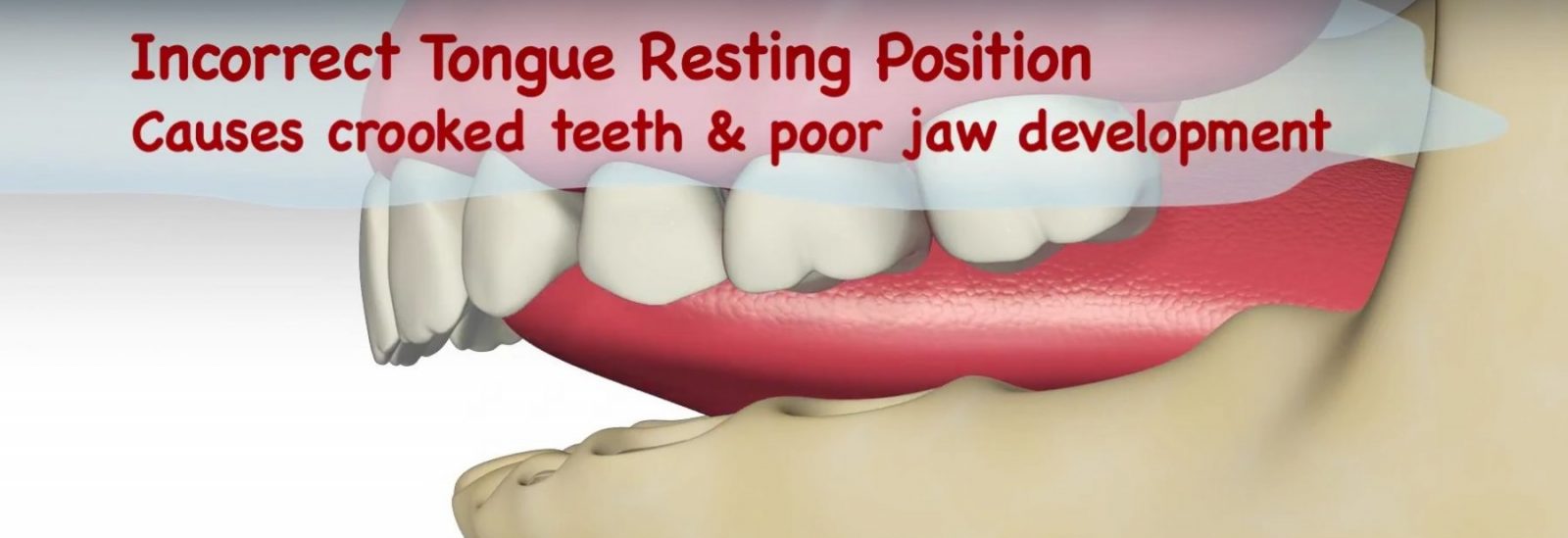 Myofunctional Therapy aims to correct dental dysfunction
Myofunctional Therapy aims to correct dental dysfunction
Certain conditions and habits learned in childhood can negatively impact oral posture and function. The result is called a myofunctional disorder. Though there are different kinds of disorders, all involve a change in the amount of vertical space between the dental arches when the mouth is at rest, or what dentists and other health practitioners call ‘freeway space’. One of the main goals of myofunctional therapy is to normalize this space by teaching patients new ways of chewing, breathing and swallowing, ultimately encouraging proper function instead of dysfunction. Myofunctional therapy can help people of all ages train themselves out of having bad dental posture and is especially effective in children.
Myobrace discourages incorrect myofunctional habits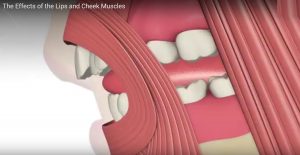 The specially fitted plastic hardware makes thumb-sucking, nail-biting, and tongue thrusting quite impossible. Instead the device reinforces positive myofunctional behaviour such as closed-lip nasal breathing and proper tongue function and swallowing patterns. The innovation aims to create a normal and harmonious oral-facial muscle environment, and to restore balance to the mouth, face, head, neck and body.
The specially fitted plastic hardware makes thumb-sucking, nail-biting, and tongue thrusting quite impossible. Instead the device reinforces positive myofunctional behaviour such as closed-lip nasal breathing and proper tongue function and swallowing patterns. The innovation aims to create a normal and harmonious oral-facial muscle environment, and to restore balance to the mouth, face, head, neck and body.
Mouth breathing – When children breath through their mouths rather than their nose, their tongue doesn’t rest in the roof of the mouth properly. This often results in an underdeveloped upper jaw and restricts the forward growth of the lower jaw. Along with the concern of teeth crowding and the resultant crooked teeth, incorrect development of the upper jaw can affect a child’s breathing by restricting their air intake.
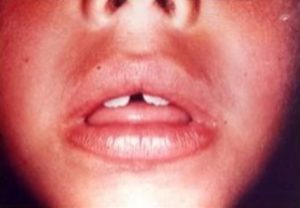
Child tongue thrusting
Tongue thrusting is the common name for an orofacial muscular imbalance which manifests as a bad habit. Tongue thrusting occurs when the individual takes comfort in moving their tongue forward so that it protrudes through the anterior incisors during swallowing, speech, and even while the tongue is at rest. The other name for this is ‘reverse swallowing’ (which along with the picture to the left, might help you to visualize and understand this oral habit better.) People who tongue thrust are at serious risk of developing oral deformities and other preventable ailments and dysfunctions over time.
Thumb sucking and nail biting are two other negative myofunctional habits that should be discouraged in small children. Bear in mind there is difference between resting a thumb in the mouth and a child actively sucking their thumb. The former is natural and was probably practiced by the infant in the womb, while the later could lead to tongue thrusting as detailed above.
Allergies, asthma and an open mouth posture also contribute to incorrect jaw development. Growing up, most of us have had one or more of these myofunctional problems, which may have been the cause of incorrect dental and facial development.
Sleep Disorders can result from mouth breathing while at rest, and these are a self perpetuating cycle for deteriorating oral health. As well as affecting jaw and facial development, the medical profession now recognizes that mouth breathing is abnormal and is one of the main contributors to Sleep Disordered Breathing (SDB) problems. Generally speaking, children that snore are often tired in the morning and are more likely to have learning problems and other developmental challenges. If left untreated in a child, SDB will likely result in more and greater health problems and a poorer quality of life in general for sufferer as an adult.
Symptoms commonly associated with Sleep Disordered Breathing (SDB) can include:
- Developmental and behavioural problems
- Snoring
- Gasping
- Obstructive Sleep Apnea
- Interrupted sleep
If your child suffers from any of these SDB symptoms, please consider scheduling an appointment at any of our three locations for a health exam. Early evaluation for the signs of poor jaw development and immediate remedial action can save your family financially and dramatically improve the quality of life for your child.
What is Myobrace?
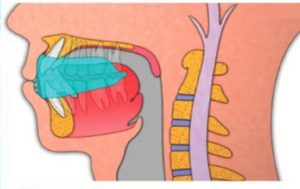 The Myobrace®System is a preventive pre-orthodontic treatment that focuses on addressing the underlying causes of crooked teeth, often without the need for braces or extraction of teeth. Myobrace is a series of removable intra-oral appliances that unlock natural growth and development. Treatment is best suited to children aged 3 to 15 and involves wearing myobrace in the mouth for one or two hours each day plus overnight while sleeping.
The Myobrace®System is a preventive pre-orthodontic treatment that focuses on addressing the underlying causes of crooked teeth, often without the need for braces or extraction of teeth. Myobrace is a series of removable intra-oral appliances that unlock natural growth and development. Treatment is best suited to children aged 3 to 15 and involves wearing myobrace in the mouth for one or two hours each day plus overnight while sleeping.
Visit the dentists at Archer Dental for analysis. Additionally, and perhaps before you book your visit, you could continue your research and answer Myobrace ten point questionnaire. The Myobrace questionnaire is an online evaluation which allows you to screen your child for ‘the causes’ that may be negatively affecting his or her jaw and facial development. The document asks for insights on how your child breathes, their posture, the open or closed position of their mouth and tongue at rest, as well as information on the way they swallow. These are their myofunctional habits and MRC will attempt to link these behaviours to the way your child’s teeth and jaws develop. You can print the questionnaire or send the results to the dental office prior to or during your first visit to Archer Dental.
The post Myobrace in Toronto at Archer Dental – Straighten Childrens’ Teeth Without Braces appeared first on Archer Dental.
https://ift.tt/2HBafsf
